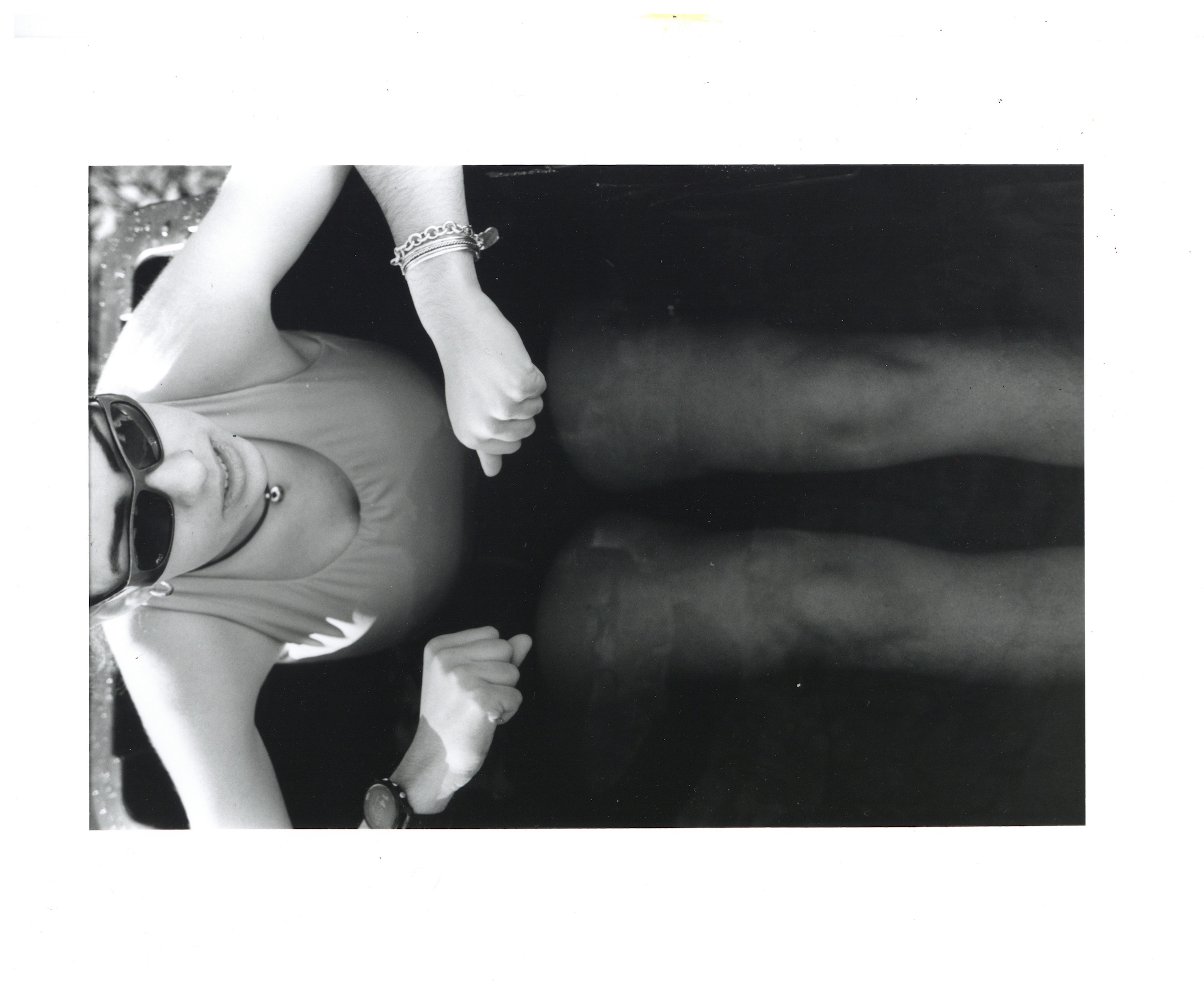
c/o Michael Fadugbagbe
When thinking about self-care, the last place my mind goes is a cold body of water. But for some at the University, the prospect of deliberately immersing their bodies in a chilling tub of ice water is the key to a healthy routine. Cold plunging has become the latest trend on campus, with some students traveling to Millers Pond to dip into the freezing water and others purchasing their own ice baths for daily use.
“It’s one of those things that I’ve always heard [about],” Emma Johnston ’24, who started cold plunging last spring at Millers, said. “If you stress your body in the right way, then instead of causing your cells and stuff to break down, it causes your cells to live longer.”
The science behind cold plunges is extensive, with studies showing that exposure to cold temperatures causes significant releases of epinephrine and norepinephrine in the brain and body, leading to increased energy and focus. Studies have also shown a link between cold exposure and dopamine release.
Josh Hecht ’24, who started plunging last semester with his roommate Markos Glucksman ’24, is one student who did his research before embarking on the cold plunge journey.
“I was super into the science behind it,” Hecht said. “I listened to a bunch of podcasts like the Huberman Lab and that kind of thing. [That made me] curious to try it for myself. I didn’t really have much exposure [to cold plunging] before, but I tried it for the first time and I was like, ‘This is incredible. I need to make this a habit.’”
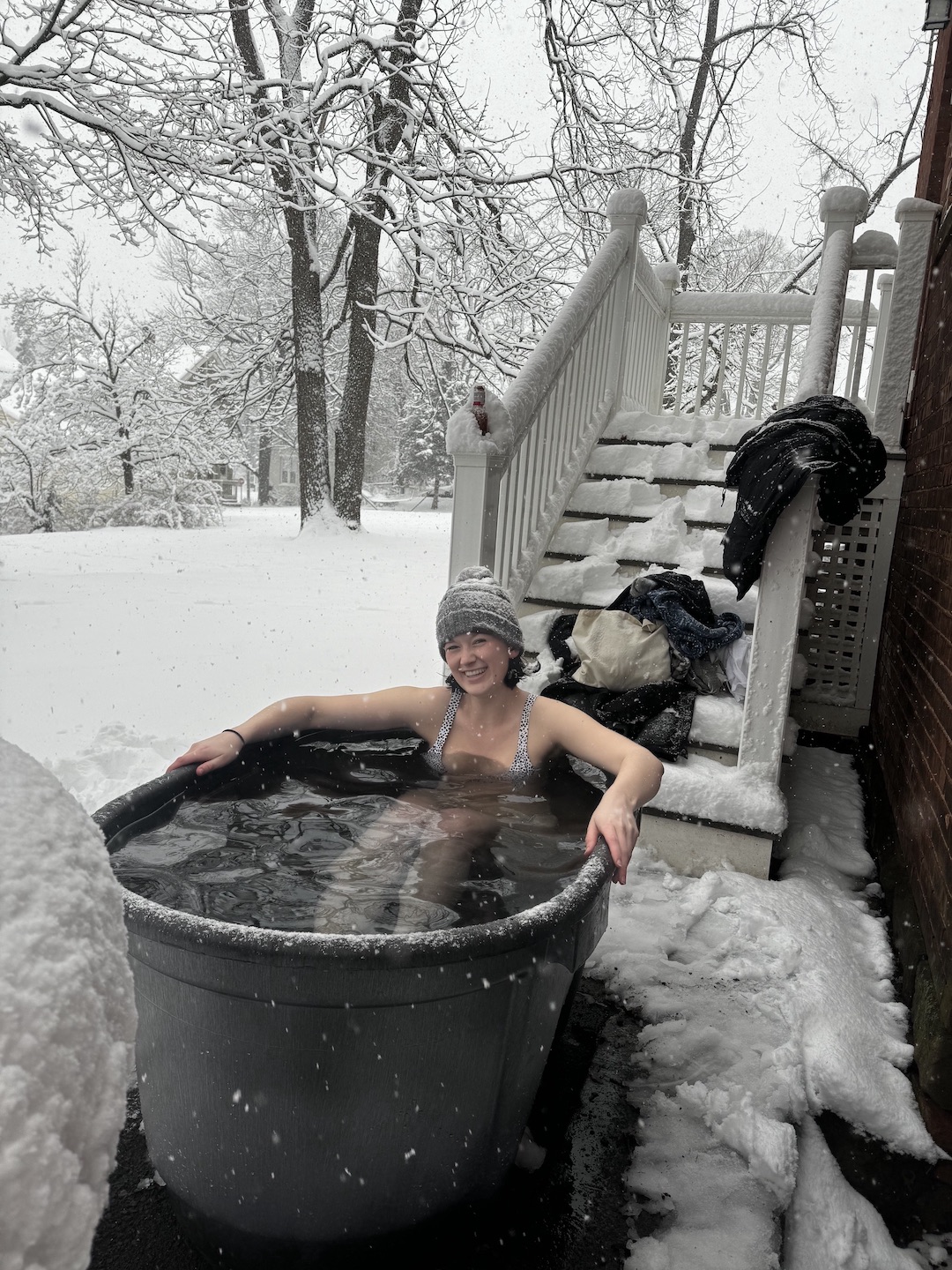
c/o Emma Johnston
Other students have also looked to the Huberman Lab and podcasts like it for advice on plunging and how to get the most out of their time in the water.
“There [was] a bunch of [information out there] telling me, ‘Yeah, keep doing it,’” Tal Rodkey ’24, who started cold plunging while abroad in Copenhagen, said. “[There are] specific [benefits] like brown fat cell thermogenesis and immune system stuff, but [more than anything], getting into cold water is not a really easy thing [to do]. Deliberately putting yourself [in] a stressful position like that and getting comfortable [with building] that sort of skill [and] those neural networks helps you be somewhat better equipped to handle [stressful situations] in your day-to-day life.”
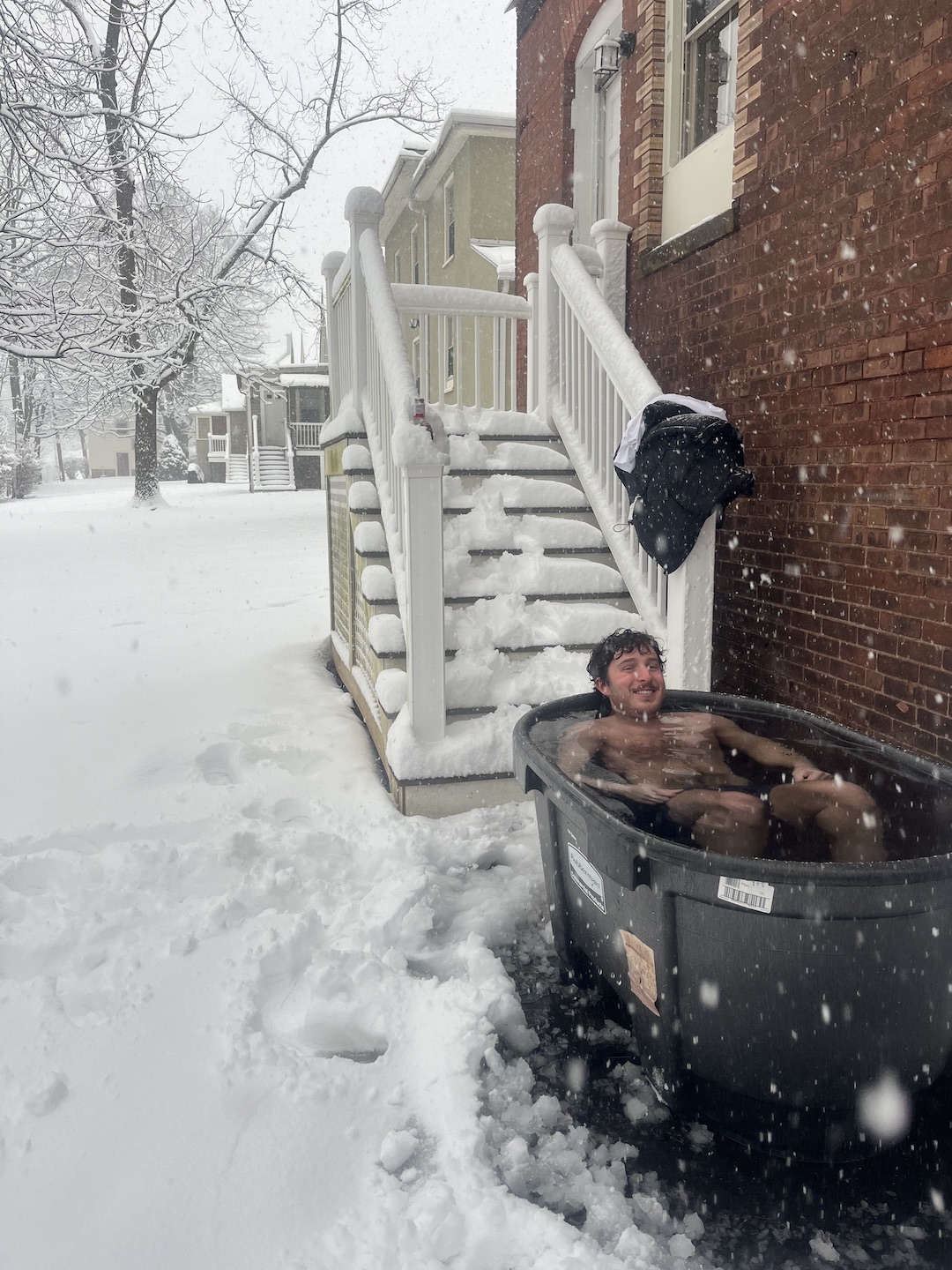
c/o Josh Hecht
Like Rodkey, Hecht has noticed mental benefits to cold plunging, in addition to physical benefits like increased metabolism.
“I think using [cold plunging] as a tool to deal with stress is pretty incredible,” Hecht said. “A lot of the time I’m caught up thinking about the past or thinking about the future but this forces you to be like, ‘I am fucking cold right now.’ That’s all I can think about. So it’s really nice to be forced back into my body [and the present].”
In addition to being better equipped to respond to stressful situations, Rodkey has found that he can stay warmer throughout the day since his body has grown more tolerant to cold exposure.
“Getting into cold water [over time] converts white fat cells into brown fat cells, which are just better equipped to deal with cold in general,” Rodkey said. “I’ve found, at least empirically, I feel a lot warmer the rest of the day.”
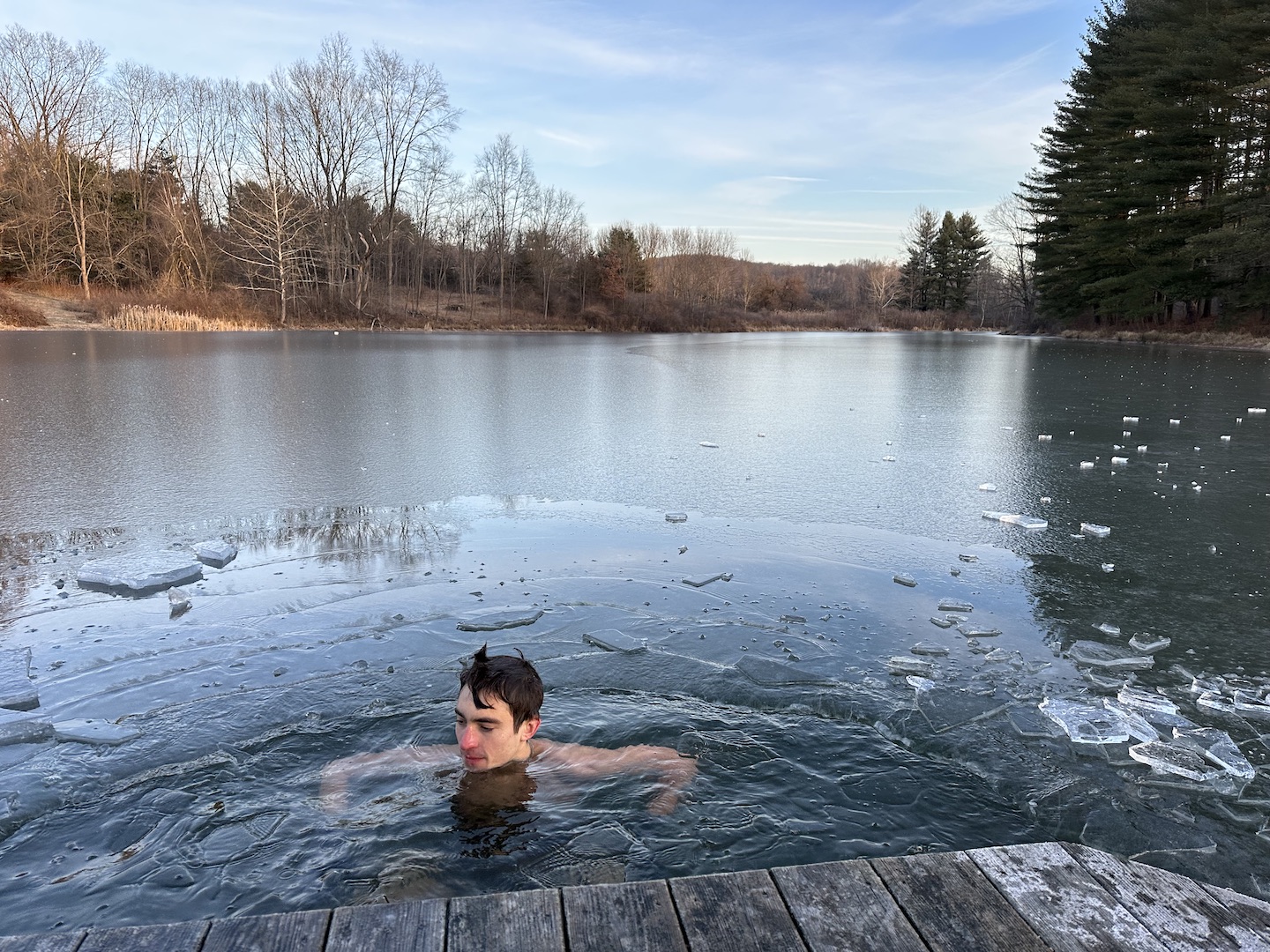
c/o Tal Rodkey
Students have also noted improved overall mood, citing euphoria immediately after plunging and elevated happiness throughout the day.
“When you get out, it’s just like the most incredible, euphoric feeling,” Hecht said.
Like Hecht, Johnston has noticed an overall improvement in her mood, especially after plunging early in the morning.
“When I do it in the morning, I feel euphoric for a while afterwards,” Johnston said. “Then [I’m] just feeling good and happy throughout the day.”
But to reap the benefits of plunging, the first step is overcoming the mental barrier of getting into the freezing tub of cold water. It can be challenging to stay motivated through the initial shock of the cold, which is why many students choose to take the plunge together.
“Doing it with someone else [is] amazing,” Hecht said. “Having that other person there to motivate you is like, make or break. I don’t think I would [still] be able to [continue] doing it today.”
For Billi Newmyer ’25, who recently started plunging with Alex Stubin ’24, plunging with friends is central to the experience.
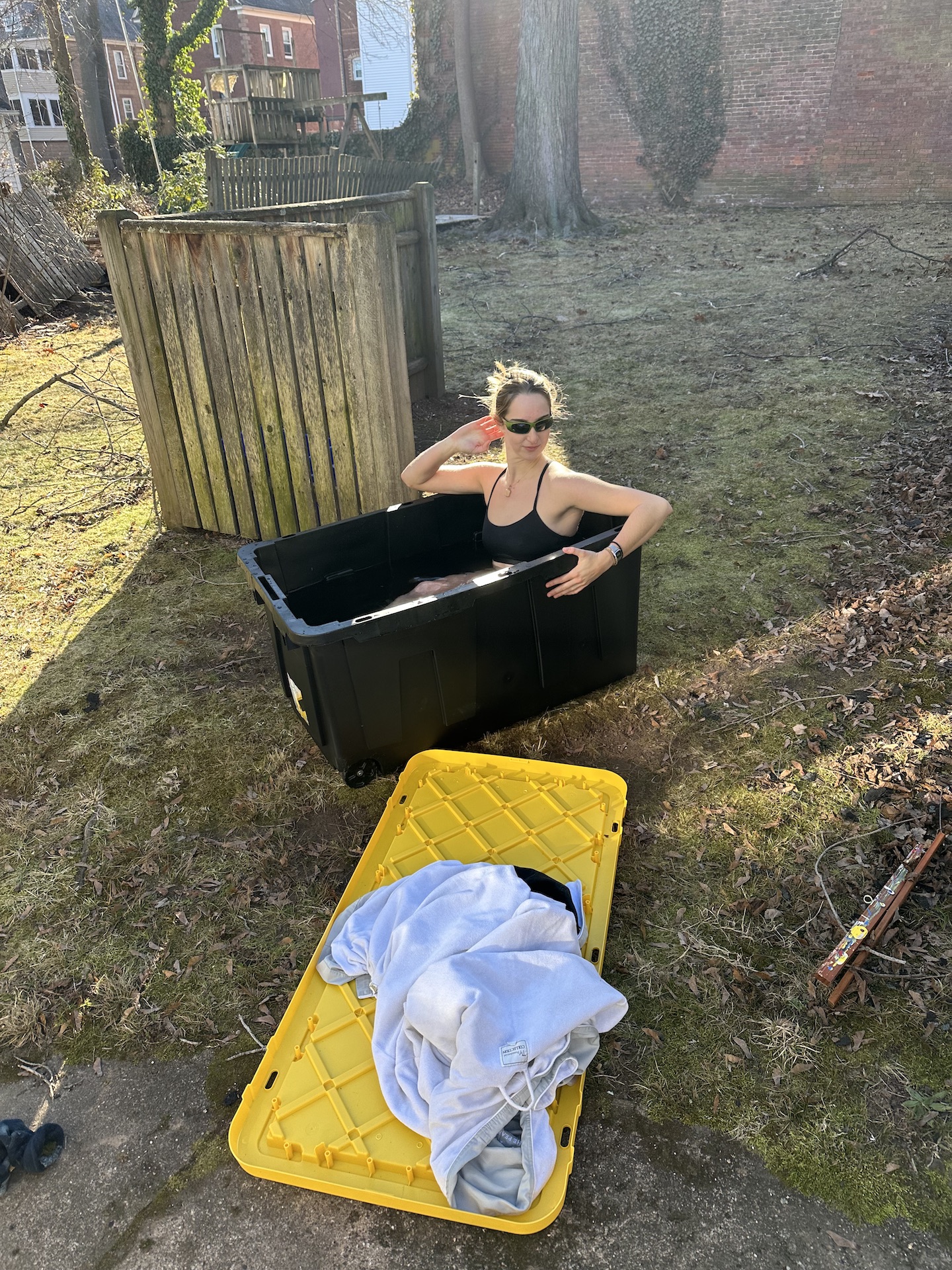
c/o Billi Newmyer
“I find it’s a lot easier when it’s a social experience, and there are people around me,” Newmyer said. “I’ve tried a few times alone, and it’s a lot harder to get through it, but when you’re with people, it’s like a communal thing. It’s a lot easier and more fun.”
Beyond the benefits of plunging with friends, students also emphasized the importance of strategy to making the experience successful. Some strategies employed include controlling breathing during the plunge and bringing a thermos of hot water, which is a good way to warm up quickly after getting out of the water.
“The most important part for me is getting [my] breathing under control,” Johnston said. “When you’re in there at first, you’re hyperventilating and then you kind of get it under control. Then, when I get out of the water, [I pour] boiling water on [my] fingers and toes.”
Methods like switching up the amount of time spent underwater according to temperature, dunking fully under the water, and, in Hecht’s case, naturally reheating for eleven minutes outside have helped students stay committed to their plunging practice, making it easier for them to keep going even in freezing temperatures.
“It’s gotten so much easier for me,” Stubin said. “The first two times I did it, I would get in and be unable to control my breath for the first few minutes, and now I get in and it’s super chill. I could talk throughout the whole thing and not really even think about the temperature because I kind of reach a meditative space where I think about my breath. I’ve come to really look forward to this ritual.”
For those looking to get into plunging, many students underscored the importance of going with more experienced plungers when trying it out for the first time in order to understand the strategies that work.
“Especially if it’s your first time, don’t go jumping into a freezing lake by yourself,” Rodkey said. “You don’t know how you’re going to react, so obviously [you] want to sort of ease into it and be with people.”
Stubin, who has been plunging in her backyard in a 70-gallon plastic tub for the past 2 weeks, wants people to know that even if they aren’t enthusiastic about cold water, they should still give plunging a try.
“It’s only as bad as you mentally make it,” Stubin said. “If you think you can’t do it, you definitely can.”
After hearing about the positive experiences of my peers, I knew I needed to try it out for myself. Armed with a thermos of hot water, my warmest sweater, and a towel, I headed to Hecht’s backyard, where he keeps a horse trough filled with cold water, with Johnston and Amanda Morris ’24 to try it out for myself.
Getting into the tub of water was no easy task. I am not the biggest fan of the cold, though my mom tells me that when I was younger, I did not hesitate to jump into the North Sea in the middle of the winter. Trying to embody my younger self, I decided to send it and get in that horse trough. But for some reason, I could not find it in myself to fully submerge myself in the water. Awkwardly crouching halfway underwater, my fingers and toes became blocks of ice, my breath out of control. After 44 seconds, I emerged from the water.
Freezing, I did not feel euphoric like the others said I would, just in desperate need of a hot shower and all the layers in the world. Luckily, I came prepared with my thermos of hot water to pour over my feet and hands. After warming up a little bit more and later taking a hot shower, I’d like to think that I had a considerable increase in my mood. (And I do think I felt a little warmer than usual.) All in all, I don’t think that will be the last time I take my chance in cold water.
Jo Harkless can be reached at jharkless@wesleyan.edu.